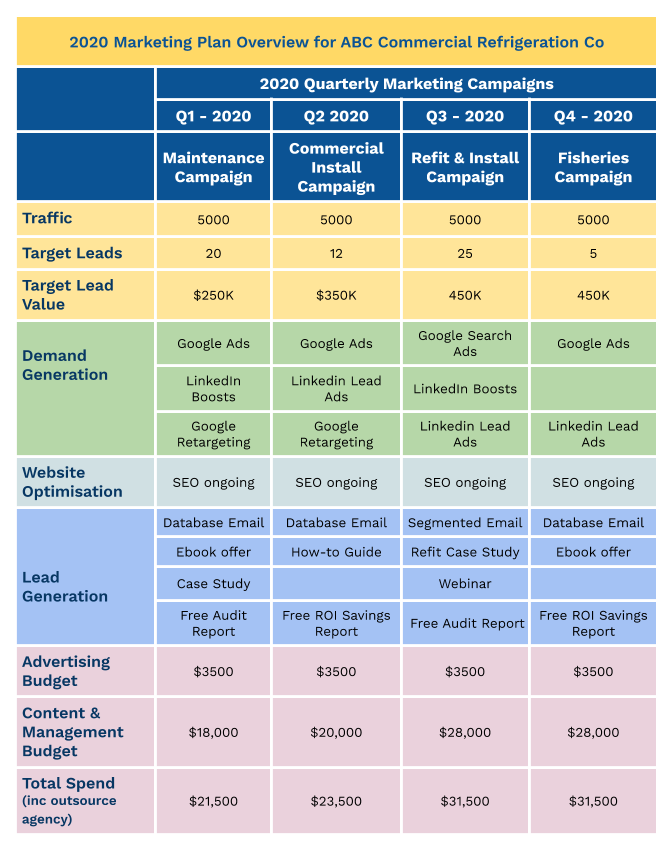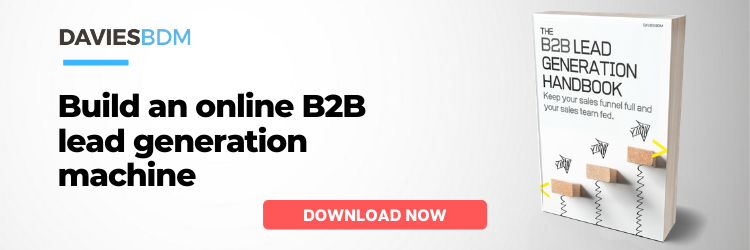3 steps to create a B2B Digital Marketing Plan for Lead Gen in 2020
If you’re a CEO, CMO or business owner, at this point in the year you might be thinking, “Do we have our digital marketing plan for 2020 sorted?”
The good news is that the Christmas/New Year lull is a great time for planning what you need to do to hit your 2020 goals.
Perhaps you need to bridge a gap to hit your sales targets, or maybe you have a goal for brand awareness that you’re not quite meeting yet.
If you already have your B2B marketing strategy sorted, getting your digital marketing plan together is fairly straightforward. You can easily knock off the big questions in team strategy day before the new year really gets going after the silly season.
Step 1: Define your sales goals ‘gap’
Before you review your B2B digital marketing plan, start by asking, are we on track to hit our sales targets? If the answer is yes, then your digital marketing plan may only need to be refined for 2020. If the answer is no, then you’d need a marketing plan designed to meet the shortfall.
If your sales aren’t where they need to be and you need to supercharge the leads you’re delivering to the sales team, it’s best to start with defining some key metrics. Start with defining what your ‘gap’ in revenue is in terms of total revenue, what that translates to in deals and the profitability on those deals.
- What is your revenue and deal count shortfall?
- What does this shortfall look like in terms of number of deals (revenue per deal)?
- How many deals are there, and what is the average deal size?
- What is the margin on these deals?
With these questions answered, you’ll be on the road to developing an action plan to close the gap.
Step 2: Look at what worked for you in 2019
With your revenue targets defined, the next step is to review your 2019 B2B digital marketing plan and strategy to see how you did against your digital marketing metrics and KPIs. Consider what worked and what didn’t.
If you didn’t set KPIs in 2019 then do this for your 2020 plan.
If you’re using a marketing platform like Hubspot, or you’re familiar with Google Analytics, Google Search Console and reviewing ads and engagement metrics on social platforms like LinkedIn, getting a handle on what worked and what didn’t should be a breeze. If not, get some help from your marketing or growth agency.
If your key metric was quality B2B lead generation for the sales team, then you’ll need to look at your key metrics.
- How many leads did you generate from your website in 2019?
- How did you define a lead?
- Did your SEO strategy work?
- What were your average leads generated each month?
- Where did most of those leads come from? Google Ads? Linkedin Ads Downloads? Website calls direct to the sales team?
- How many phone calls did you get from tracking calls via Google Ads, Facebook Ads or your website?
- Which were the best performing ads, blogs, newsletters, ebook downloads?
- Which pages were most viewed on your website?
- Which landing pages and CTAs had the most hits?
- How many people filled out the contact us form on your website?
- How many prospects said they called directly after reading a blog?
- How many prospects said they called after reading your newsletter?
Understanding which content worked well, where the interest was and trends over time will help you focus on the right areas and inform your ideas for marketing activity in 2020.
Step 3: Create a digital marketing campaign plan for 2020
So you’ve got your goals, analysed your activity and have a good idea of what you want to target and promote in 2020. The next step is to create a marketing plan overview. The marketing plan overview is often segmented into quarterly campaigns that focus on a specific marketing or service area, measured against targets for:
- Traffic Generated
- Target Leads Generated
- Target Lead Value
Create Focused Digital Campaigns & Set Targets
Determine the service or industry you wish to focus on and create quarterly campaigns to target certain industries, promote specific services or target specific personas. Each campaign has a defined budget and lead generation target and can be measured using marketing platforms like Hubspot.

Creating a B2B digital marketing plan for 2020 is straightforward if you follow these simple steps. Define your revenue and sales targets, look at which marketing activities worked in 2019 and then use this information to build out quarterly campaigns. This is a tried and tested way to give you the best chance of hitting your B2B revenue goals in 2020.



Leave A Comment